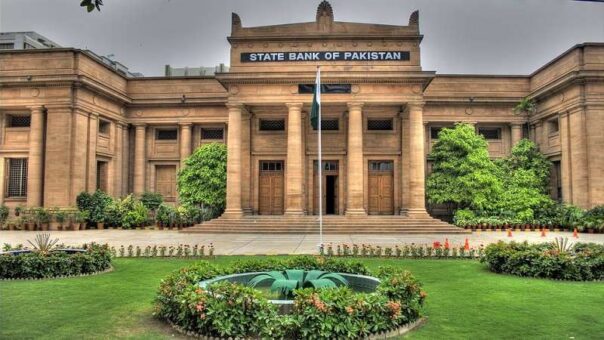In a striking development for Pakistan’s economy, government borrowing has hit an unprecedented high of Rs 5.301 trillion for the fiscal period from July 1, 2023, to April 12, 2024.
This figure was confirmed by the latest data released by the Central Bank, highlighting the intense financial pressures facing the nation as it attempts to cover a significant budget deficit and escalating debt interest payments.
This year’s borrowing represents a 71 percent surge compared to the same period in the previous fiscal year, during which the government had borrowed Rs 3.102 trillion. The amount borrowed so far this fiscal year has already eclipsed the total for the entire previous year, which was Rs 3.716 trillion.
The sharp increase in borrowing underlines the fiscal challenges confronting Prime Minister Muhammad Shehbaz Sharif’s administration, which is grappling with a limited capacity to manage public finances effectively. The cost of government borrowing in the first half of FY24 soared to Rs 4.2 trillion, accounting for 61 percent of total revenue. This spike is primarily attributed to the historically high interest rates, which have compelled the government to allocate a significant portion of its revenue to servicing the national debt. This, in turn, leaves minimal funds available for other essential expenditures.
With the State Bank of Pakistan (SBP) maintaining a policy rate of 22 percent amidst inflationary pressures, the economic landscape remains fraught with uncertainty. Analysts are keenly awaiting the SBP’s upcoming monetary policy review meeting scheduled for April 29, where decisions will be influenced by a reported drop in inflation from 20.7 percent in March to 17.1 percent in April. This drop might allow some leeway for monetary easing.
Concurrently, ongoing discussions with the International Monetary Fund (IMF) are focusing on austerity measures and economic adjustments, which could further fuel inflation pressures initially. Adding to the economic strain, a recent spike in global oil prices poses additional risks that could destabilize the national currency and affect the timing and advisability of initiating a monetary easing cycle.
Despite these pressures, domestic demand for loans from private businesses remains tepid, with bank lending to the private sector totaling just Rs 45.542 billion during the same period, a drastic reduction from Rs 218 billion a year earlier.
In a more positive light, Pakistan reported a current account surplus of $619 million in March 2024, the highest since February 2015. Finance Minister Muhammad Aurangzeb conveyed optimism about reaching a staff-level agreement with the IMF by early July on a new, extended loan arrangement as the nation’s existing $3 billion agreement with the fund is set to expire by the end of April. This upcoming agreement is deemed critical in averting a potential sovereign default similar to last summer’s crisis.
Minister Aurangzeb also highlighted potential structural reforms aimed at enhancing economic resilience. These include improving the management of the debt-laden energy sector, reducing losses in state-owned enterprises through privatisation, and increasing the government’s tax revenue-to-GDP ratio from the current level of approximately 9 percent to between 13 and 14 percent within the next two to three years.
As the government and the SBP deliberate on potential rate cuts to foster growth and support the business sector, these structural adjustments and the improved external account conditions could play pivotal roles in stabilizing Pakistan’s economy in the tumultuous times ahead.
